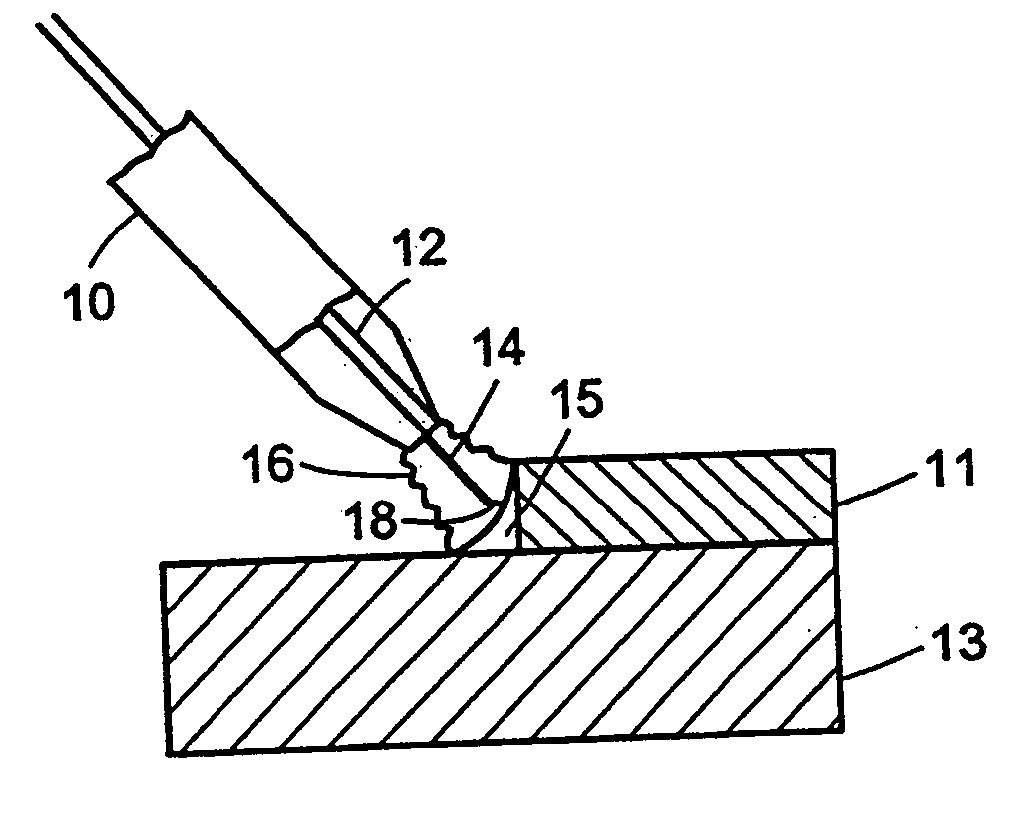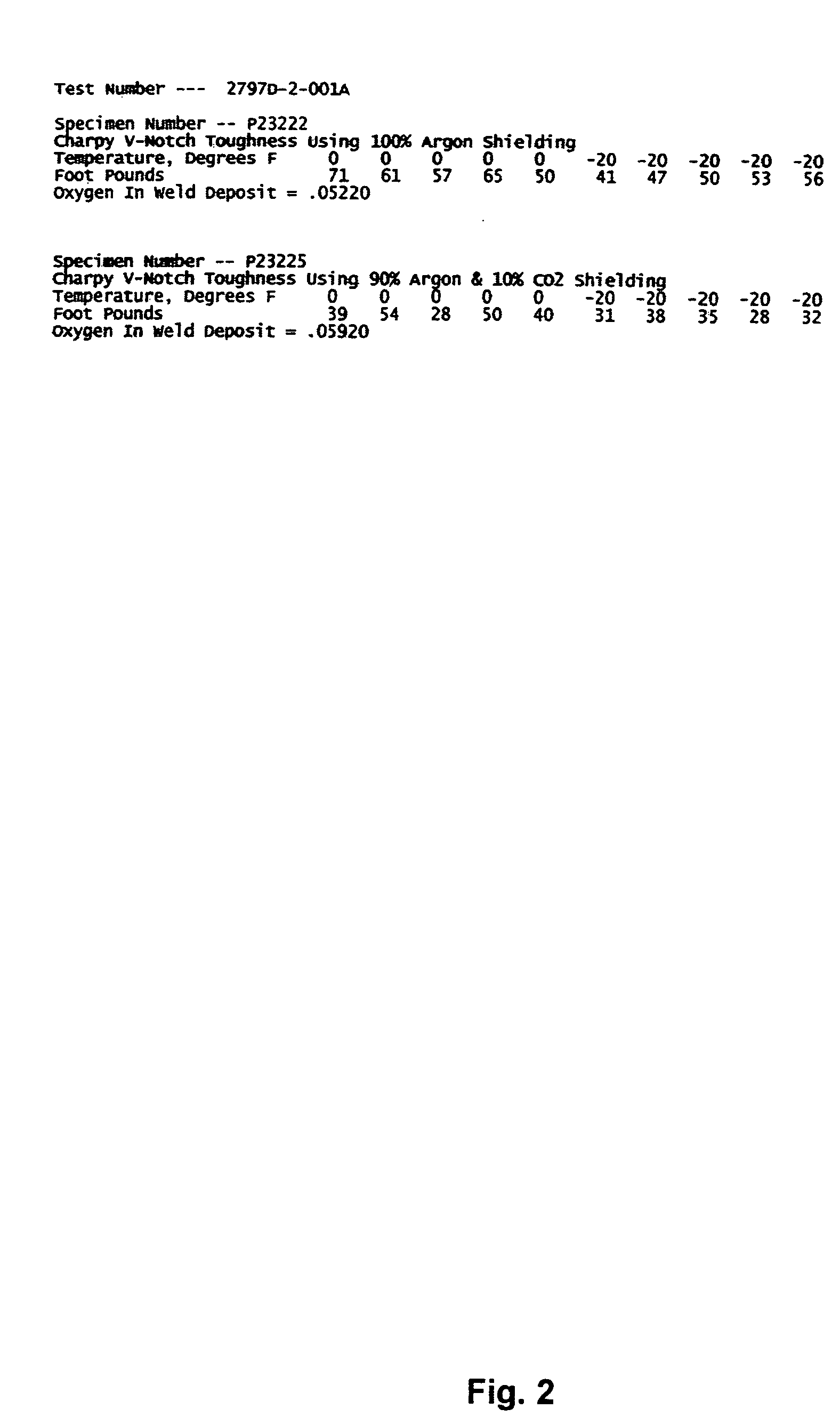Metal-core gas metal arc welding of ferrous steels with noble gas shielding
a technology of noble gas shielding and metal arc welding, which is applied in the direction of welding/cutting media/materials, welding apparatus, manufacturing tools, etc., can solve the problems of deterioration of mechanical properties, visible marks or scars on the welds, and affecting the appearance of pieces. , to achieve the effect of reducing penetration
- Summary
- Abstract
- Description
- Claims
- Application Information
AI Technical Summary
Benefits of technology
Problems solved by technology
Method used
Image
Examples
Embodiment Construction
[0023] The metal-core wires used in the gas-metal arc welding of ferrous alloys in the pure inert gas shielding atmosphere comprise low carbon metal-core wires, stainless steel metal-core wires, low alloy metal cored wires and others.
[0024] Low carbon metal-core wires have generally the following wire composition, between the approximate ranges, by total weight of the wire:
TABLE 1Low carbon metal-core wire compositionWireEmbodiment 1Embodiment 2C0.005-0.150%0.005-0.040%Mn0.5-2.5%1.4-1.8%Si0.2-1.2%0.8-1.2%Ti0.001-0.100%—B0.0001-0.0200%—O2 (ppm)100-500 200-400 FeBalanceBalance
[0025] wherein the core composition includes, between the approximate ranges, by total weight of the wire:
TABLE 2Core composition of a low carbon metal-core wire asa percentage of the total electrode.CoreEmbodiment 1Embodiment 2Mn0.1-2.5%1.40-1.80%Si0.2-2.0%0.8-1.2%Ti0.001-0.100%—B0.0001-0.0200%—Fe 0.2-10.0%1.5-2.5%Fill %0.001-12% 2.5-6.0%
[0026] and the steel sheath includes, between the approximate ran...
PUM
| Property | Measurement | Unit |
|---|---|---|
| Temperature | aaaaa | aaaaa |
| Temperature | aaaaa | aaaaa |
| Electric potential / voltage | aaaaa | aaaaa |
Abstract
Description
Claims
Application Information
 Login to View More
Login to View More - R&D
- Intellectual Property
- Life Sciences
- Materials
- Tech Scout
- Unparalleled Data Quality
- Higher Quality Content
- 60% Fewer Hallucinations
Browse by: Latest US Patents, China's latest patents, Technical Efficacy Thesaurus, Application Domain, Technology Topic, Popular Technical Reports.
© 2025 PatSnap. All rights reserved.Legal|Privacy policy|Modern Slavery Act Transparency Statement|Sitemap|About US| Contact US: help@patsnap.com



